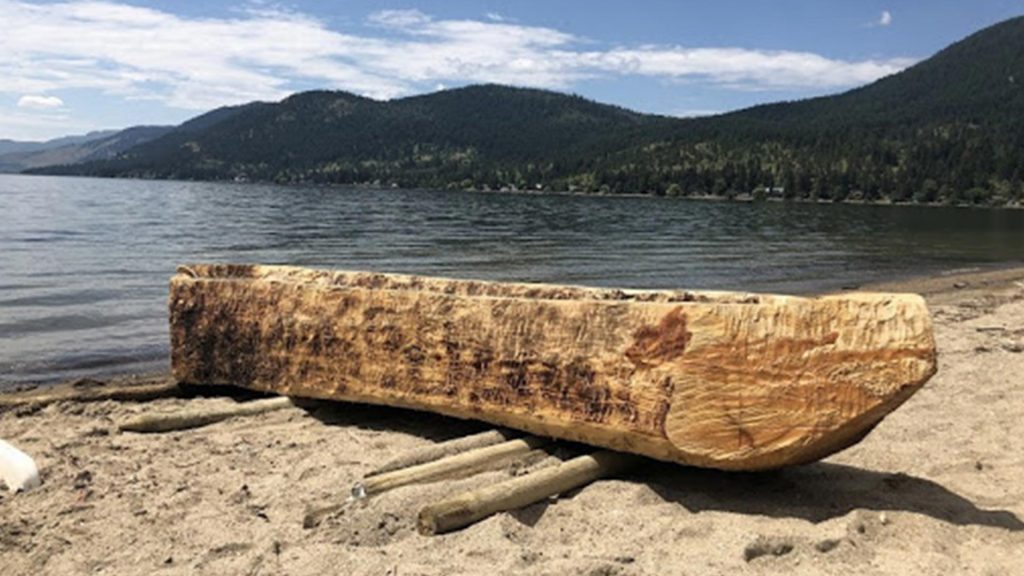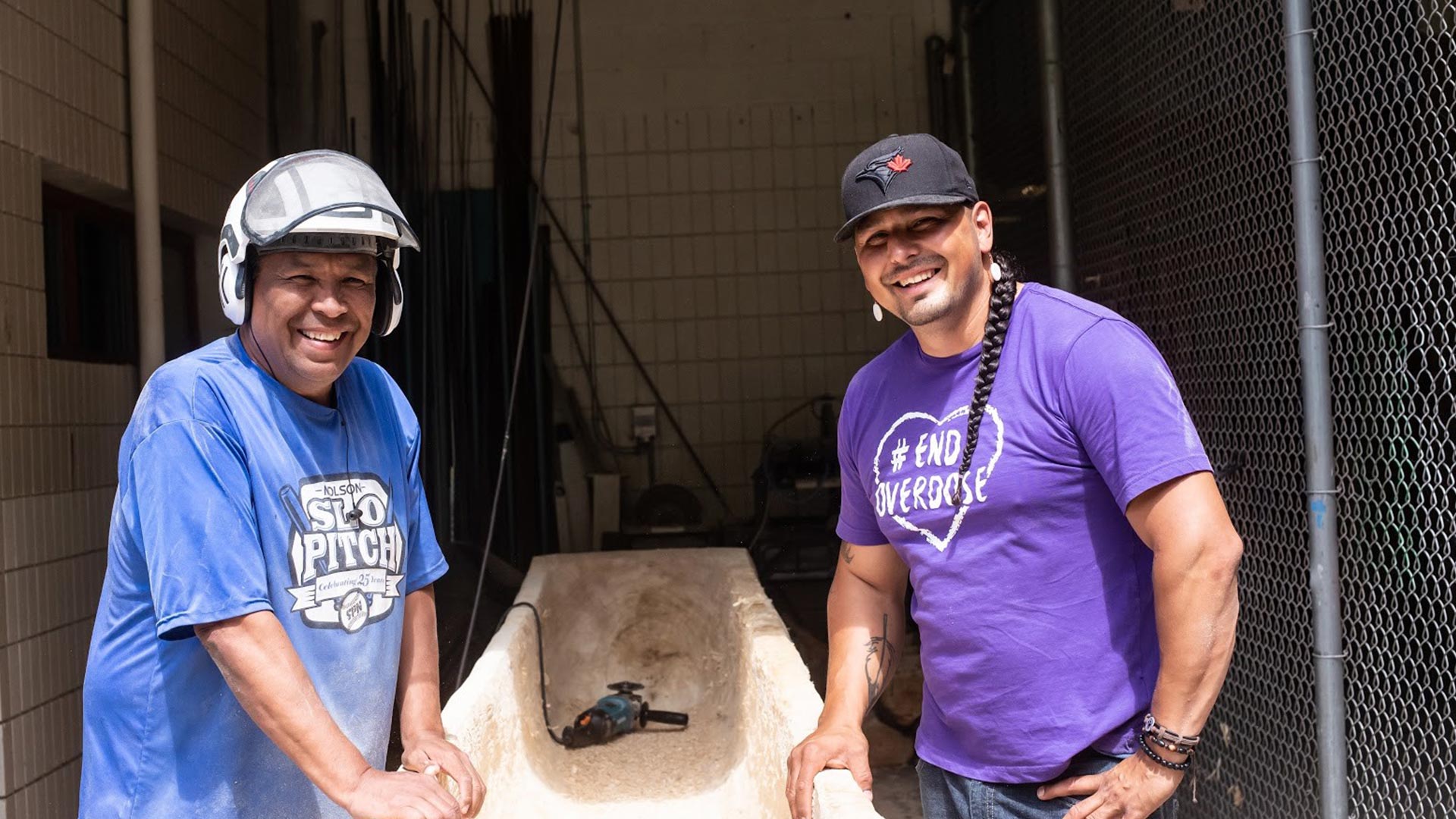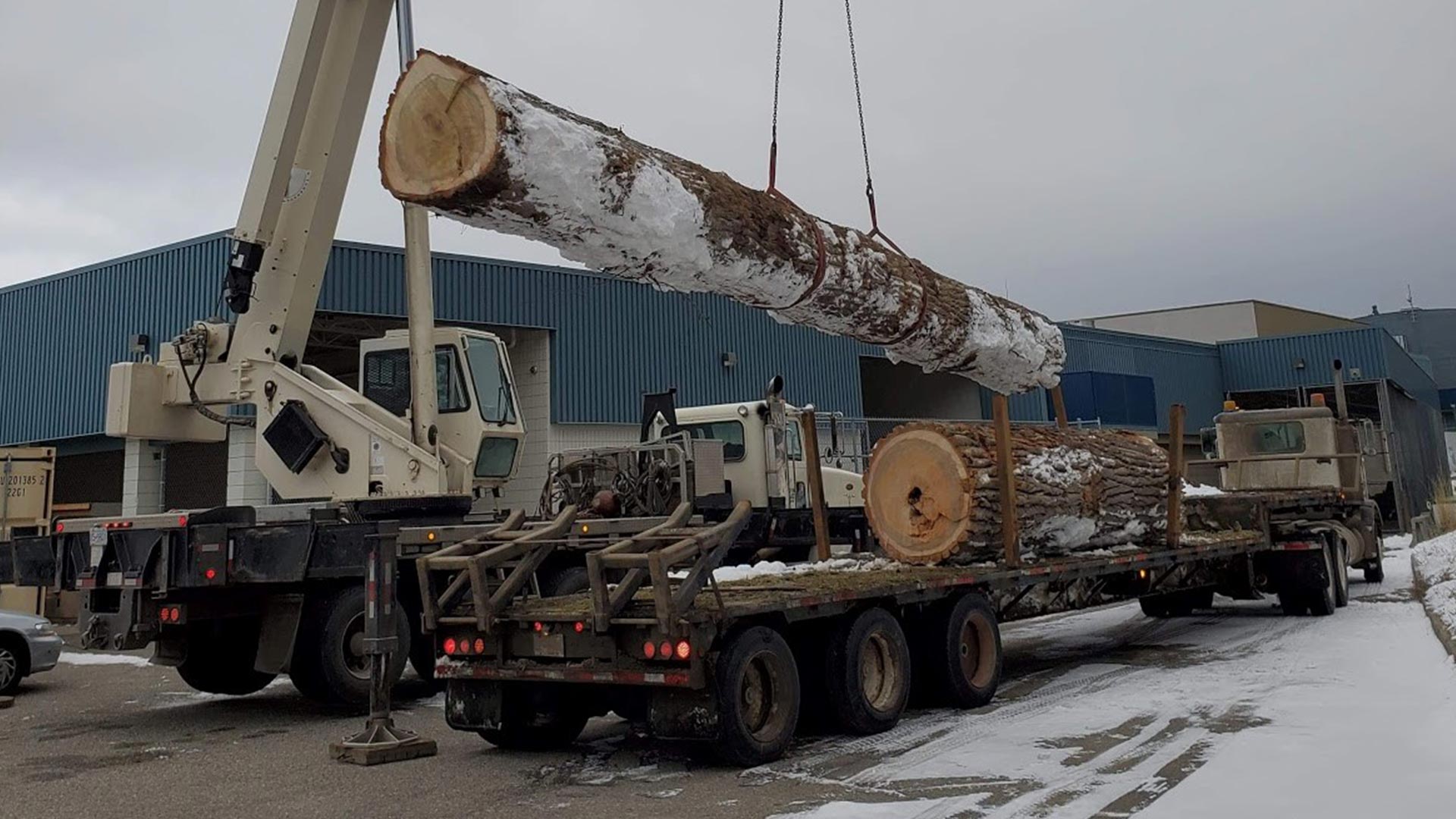
A completed dugout canoe by Frank Marchand. Photo submitted by Brenda Celesta
In 2002, Frank Marchand says his dad asked him to talk to Lousie Gabriel, a respected elder in the Okanagan Nation.
She told him, “I want you guys to bring the canoes back,” Marchand says.
Marchand has been working on it. His late father, Gordon Marchand, was a master carver.
While Frank Marchand doesn’t consider himself a master carver yet, he’s carved three dugout canoes for his own projects and helped build four others.
“I am just learning, and I’m doing pretty good at it,” Marchand says.
The 52 year old now works for two, soon to be three, school districts teaching students to carve dugout canoes.
This year, about 500 Indigenous and non-Indigenous students were working on two canoes in West Kelowna and three canoes in Kamloops.
But with the school closures due to COVID-19, students have not been able to participate in person for the last several weeks.
“It’s unfortunate that they can’t be there in person, but we do have students that are following online,” says Brenda Celesta, who teaches at Brocklehurst Middle School in Kamloops.
The canoe project, which students in Kamloops’ SD73 get credit for, came out of a discussion with staff members about how to engage their students in a hands-on project
“We were looking at the idea of bringing a large project into our school that could be either school wide or classroom wide,” says Celesta. “The discussion about a canoe project came up and so that’s how it all started.”
Bringing back dugout canoe culture
Traditionally in the Okanagan and the Shuswap territories cottonwood canoes were the main method of transportation, Marchand explains.
“We never had horses so we transported the elders via a canoe,” Marchand says. “Berries and dried meats and stuff like that were also transported by canoe.”
Marchand learned to carve by watching his father.
“I just loved hanging out with them and watching him carve,” he says. “That’s what he loved doing. So I love doing it too.”
There is a real demand for reviving dugout canoe culture Marchand says. According to Marchand, there are people reaching out from as far away as Arizona and Fort St. James asking if he can carve canoes for their schools or reserves.
“It’s just crazy. This is the tip of the iceberg,” he says. “So we’re trying to find more people who want to do this full time.”
One of those people is William Poitras, Marchand’s carving apprentice. Poitras had no prior knowledge of carving a dugout canoe, but he says he knew the revival of traditional practices was crucial.
“I grew up in Vernon,” he says. “I went to a Catholic school so I never really had an experience having cultural opportunities come up for us.”

Marchand was Poitras’s advocate in highschool. The two have had a close relationship for over 20 years and are planning to run the canoe business as a team from this project on.
“Starting this project was giving an opportunity for those students with Syilx ancestry an opportunity to reclaim a sense of their identity through cultural practices,” Poirtas says.
Poitras believes that the youth benefit from learning how to recognize, respect, and protect these resources, something he says they’ll want to pass on to future generations.
“[It can] awaken a sense of pride in who they are, where they come from, and what they are capable of accomplishing,” Poitras says.
How canoes are made
When it comes to making a canoe “every master carver uses different techniques,” Marchand explains.
The first step is getting the trees. For the current batch of canoes, two cottonwood trees were brought in from around Vernon, B.C. on a flatbed truck. They were large enough that they needed to be lifted off by a crane.

Then students were then taught to use and sharpen axes. “Both schools broke a lot of axes,” Marchand says.
“I love the kids being there,” he says. “I really don’t care who carves. As long as they’re happy and they’re doing a good job and they bring good energy to the canoe.”
Celesta believes this type of work is good for the students.
“I think it’s really important that students are engaged in something physical,” she says. “I think the culture in our past, it has always been physical.”

Since the students haven’t been able to help out, Marchand and Poirtas are using a combination of axes and power tools to finish the job.
While COVID-19 continues to bring uncertainty, as schools begin to open back up they hope to find a way to still be able to launch the canoes on July 4 with the students.
“When they are on the canoes speaking the language and singing songs and the water, it just doesn’t get any better than that,” Marchand says.
“I just love being on the water.” he says. “I’m close to the water, which is very healing.”
Athena is an education reporter for The Discourse as part of the Local Journalism Initiative. She is a Syilx/Northern Cree journalist who was born and raised on the unceded territory of the Penticton Indian Reserve, where she currently lives. Her work is featured on IndigiNews.com, a new platform created by The Discourse and APTN.










